ISSN ONLINE(2319-8753)PRINT(2347-6710)
ISSN ONLINE(2319-8753)PRINT(2347-6710)
Eman M. Abid1 Dr.Inaam M.Abdulmajeed2 and Dr.Kadhim A. Aadim2
|
| Related article at Pubmed, Scholar Google |
Visit for more related articles at International Journal of Innovative Research in Science, Engineering and Technology
The study was carried out by the preparing of SrTiO3 thin films and studying the effect of annealing temperatures at (723, 773, 823) k for 2h on structural and optical properties. The SrTiO3 thin films have been prepared by pulse laser deposition in a vacuum condition at about (4×10-2) mbar. X-ray diffraction pattern of the films confirmed that all the grown films have polycrystalline structure rather increase in average grain size with increase temperature from7.03nm to9.25nm. The optical measurements show that the SrTiO3 thin films have direct energy gap which show that energy gap decrease from 3.7eV to 3.4 eV with increasing the annealing temperature, the transmittance decrease with increasing temperature.
Keywords |
| PLD, SRT, XRD, Optical Properties. |
INTRODUCTION |
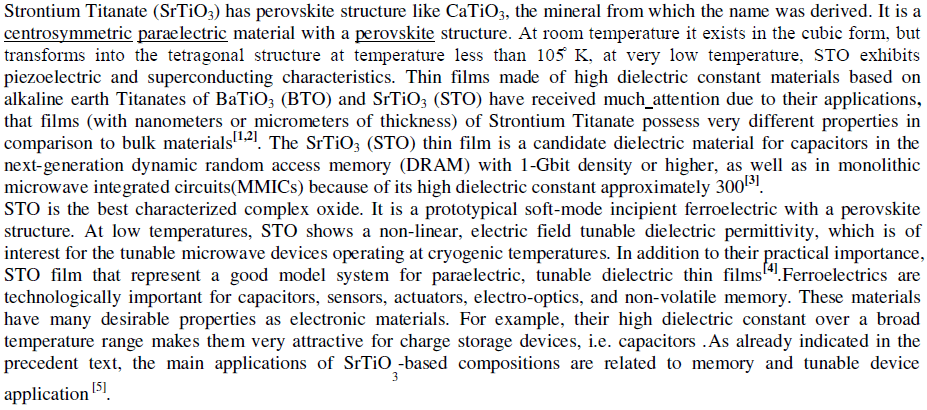 |
EXPERIMENTAL WORK |
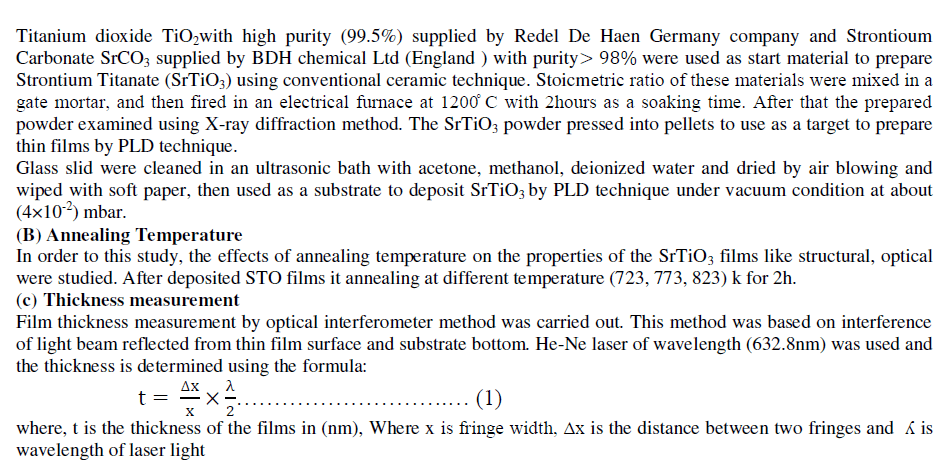 |
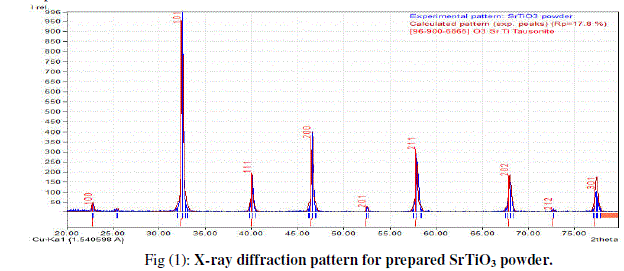 |
| The annealing temperature plays an important role in determining the structure of SrTiO3 thin films which are fabricated on glass substrates. Figs ((2) a, b, c, d)) show the XRD measurements results of SrTiO3 films prepared by Pulsed laser deposition (PLD) technique (at laser source energy 900mJ) in the range θ ( o -80o) on glass substrate at room temperature RT and different annealing temperatures (723,773 823) K. |
| XRD pattern of SrTiO3 Prepared thin film at room temperature is shown in fig 2 (a) only (101), (111), (200), (211) and (202) peak were observed, in other word weak signals suggesting that the film is not well crystallized, while in curves (2 (b), (c) and (d)), it is clearly that intensity of all packs were increase with increasing of annealing temperature. All films grown in this work exhibit the same shape and the patterns assuming that all the films grown on glass substrates are with strongly c–axis orientation. The FWHM of 2θ values linked to the grain size of the film. The smaller FWHM means that the larger grain size, and the better crystal quality of the whole film. Increasing the annealing temperature of the films enhanced the crystal quality of the film, indicated by the decreasing values of FWHM. The XRD measurements indicate that the high annealing temperature films are more crystalline and have larger grains than the low annealing temperature films. The average crystallite size d measured in a direction perpendicular to the surface of the specimen was calculated using Scherrer formula as shown in eq. (1). Where represents a width measured in radians at intensity equal to half of the maximum θB is the Bragg angle and k is the shape factor of the average crystallite [6]: |
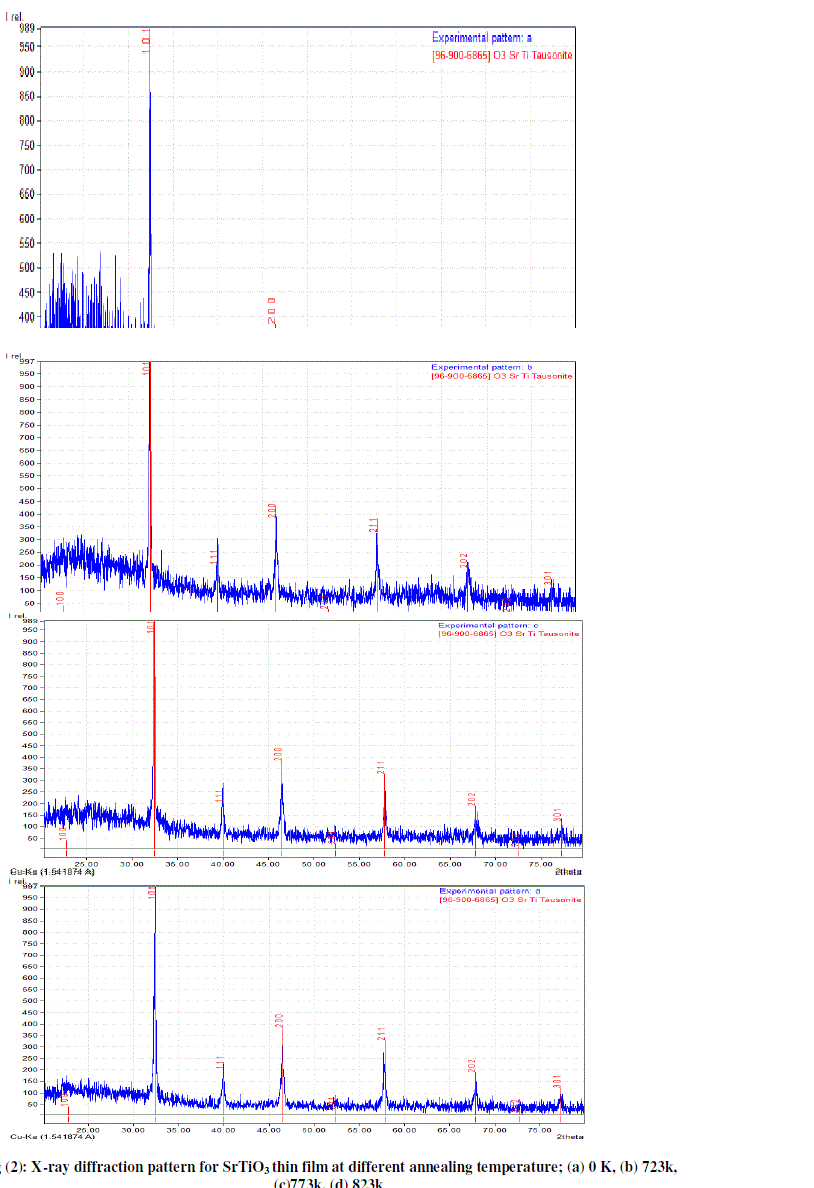 |
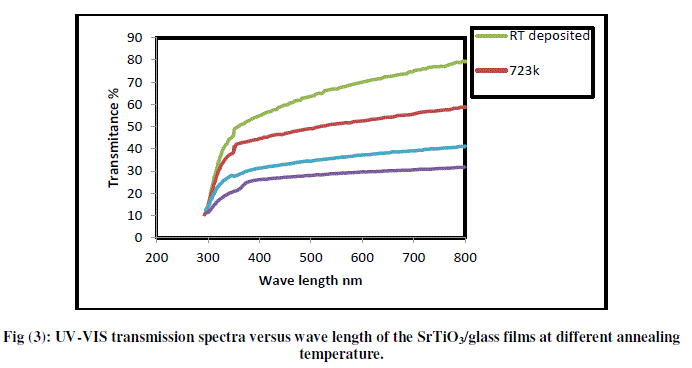 |
(B) Optical Properties |
| The average transmittance in the visible part of the spectra (300-800nm) is about (80-90)%, for all the films analyzed the transmission spectra demonstrated that the film was highly transparent in the visible region This means that the thin film absorbs less photons of light imposed on it. Figs (3) and (4) show the transmission and absorption spectra of SrTiO3 films respectively at different annealing temperature (723, 773, 823) k. It is observed that the film which have higher temperature displayed lower transmittance because of the improving the structure of the films and increase of grain size by annealing which means increase in the absorption. |
| The Tauc relation between the absorption coefficient and direct and indirect band gap energies (Eg) are given by [7] |
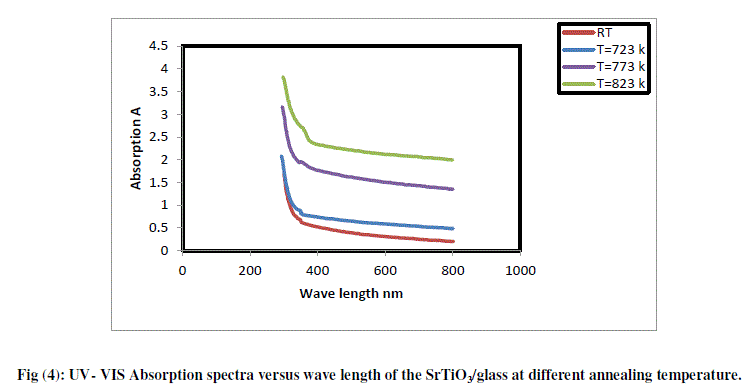 |
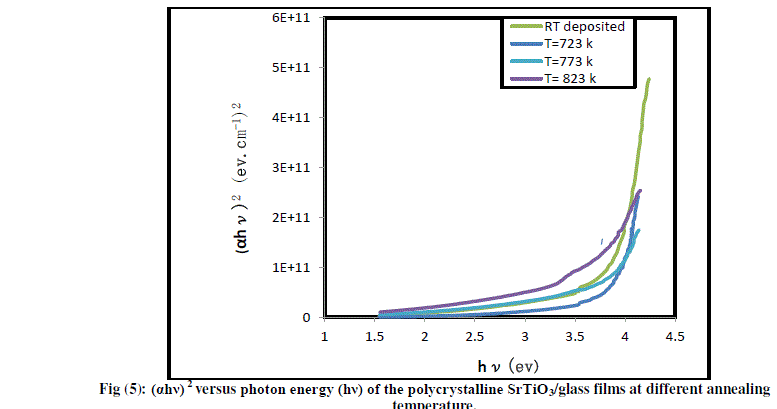 |
CONCLUSION |
| Crystalline SrTiO3 thin films have been prepared on glass substrate using Pulse Laser Deposition technique. The structural and optical properties of the films were studied. Our results indicate that the film annealed at 823k show more pronounced crystallinity with large grain size, the optical energy gap of SrTiO3 thin films is affected by annealing |
 |
References |
|